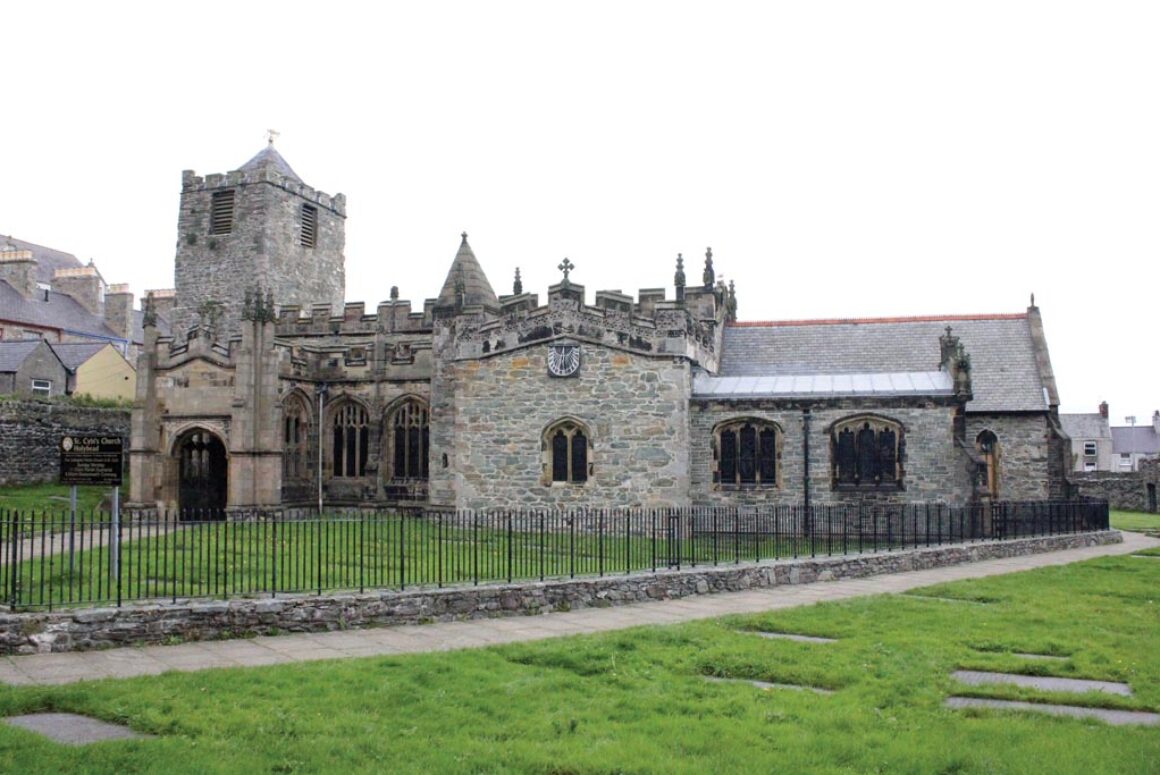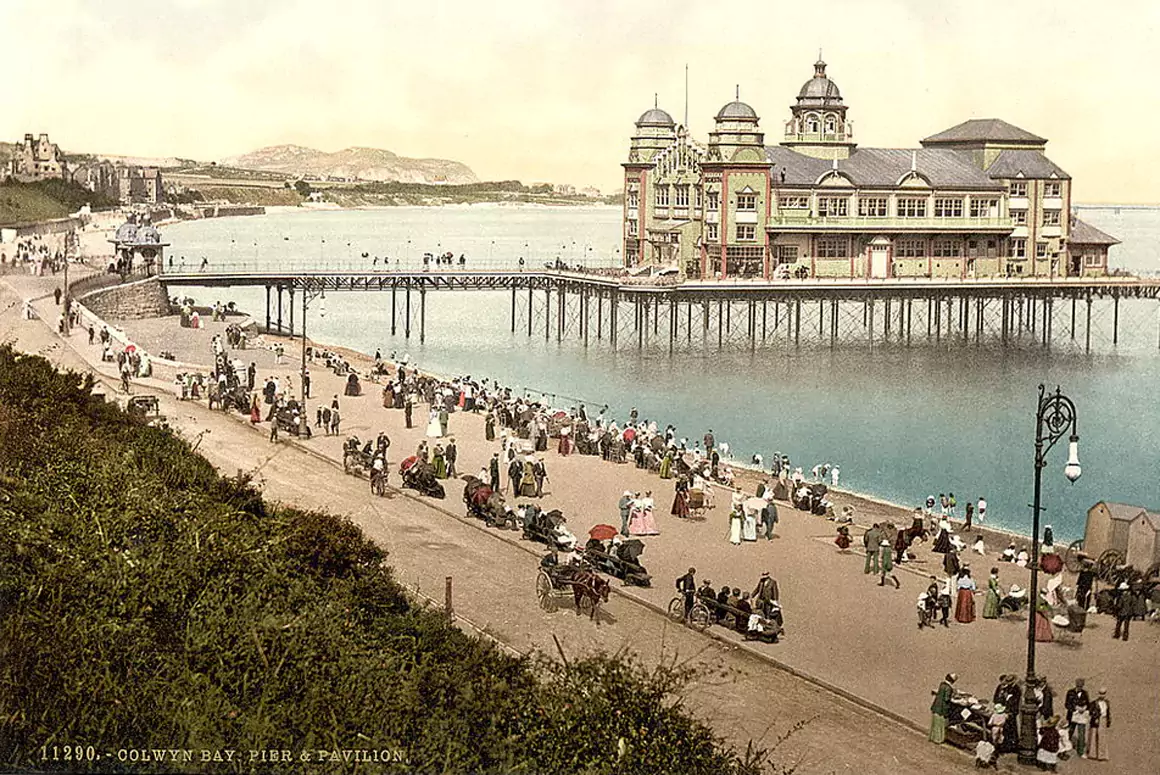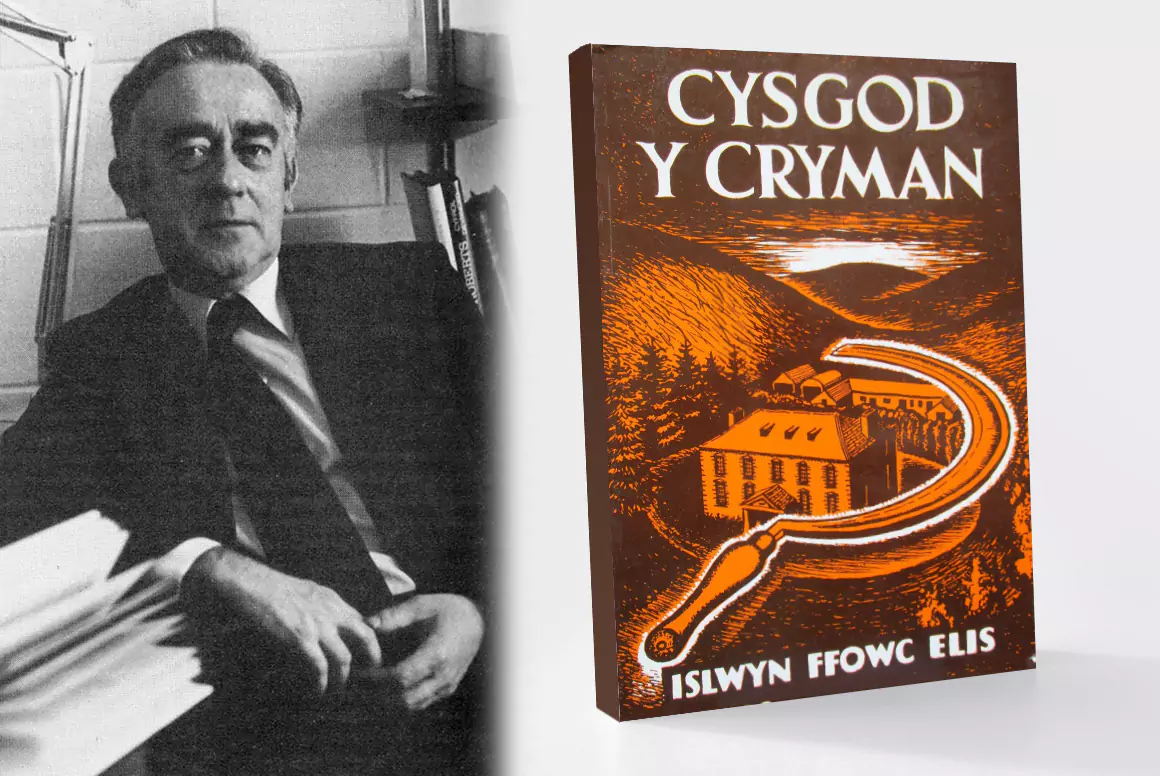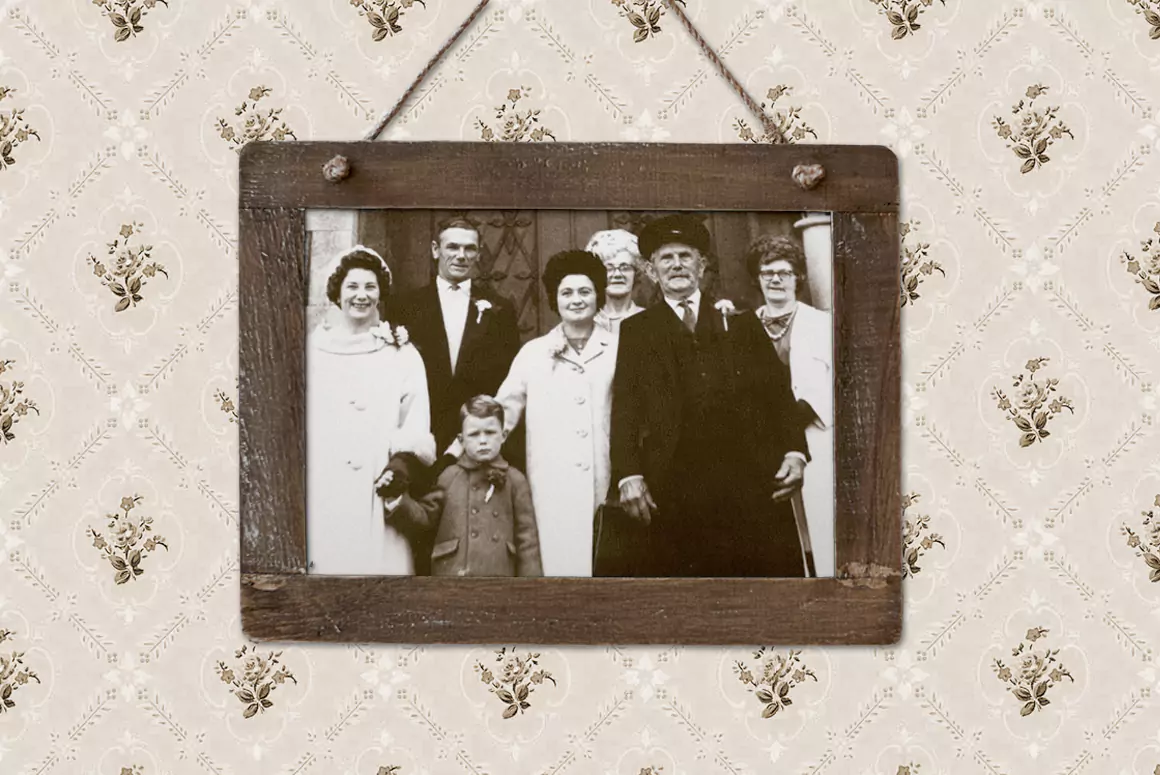![]()
The wind blew me from the shore
To the bricked road and ancient lore
Where the Walk starts – twin gates of stone
And high upon Mynydd Tŵr
The ferry lights, the Breakwater
Scented at my feet – gorse and heather
Back in the 6th century when Maelgwyn, ruler of Gwynedd, gave the 4th century Roman fort to Saint Cybi to house a monastic community, it set the nucleus for the Welsh naming of this town. Caergybi – Cybi’s fort and the island – Ynys Gybi – Cybi’s Island.
Saint Cybi – who died in 554 AD – was the son of a Cornish king and a cousin of Saint David. In the 10th century Viking invasion, the church he built in 540 AD was vandalised. In the 13th century, construction of the present St Cybi’s church began on the same site. The build surrounded the mediaeval church. The ‘new’ east wall holds a segment of the original mediaeval wall complete with painting of a Tudor rose. In 1405 came Henry IV’s army. When that was over, St Cybi’s shrine and relics were removed and taken across the waters to Christchurch Cathedral, Dublin. Since the Reformation, their whereabouts are not known. Then came Cromwell’s soldiers in the 17th century, garrisoned in St Cybi’s Church, they ravaged it.
There’s more naming history of this port town. The other side of the story. In 1315 those alive then knew it as Haliheved. In 1536 this became Holy Hedde and by 1573 – Holyhead. There is even more… The Romans called it Sacrum Promentarium for the mountain rising from the island’s relatively ‘flat’ land. Translated – Holy Head.
Today, that the town is on an island is easily forgotten under the roads and rails, which effortlessly enable traffic to and fro – whether into the town or for the port to Ireland. The original crossover, before the 1826 Telford / Holyhead Road (of Thomas Telford engineering fame) and the A55/North Wales Expressway over the narrow Cymyran Strait, was at Four Mile Bridge, found further south.
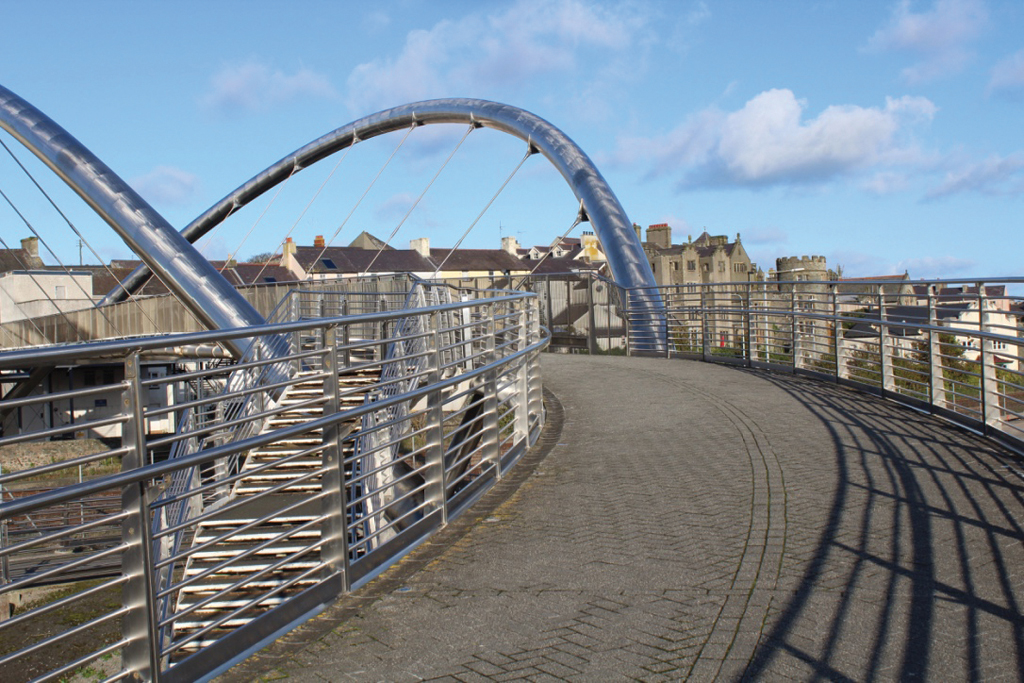
Standing on the Celtic Gateway Bridge with the sun bouncing off the railing, the traffic roars beneath. On the coast side, there’s the rail station, then the ferry harbour. Symbolising the future in its arched and curving lines, this bridge connects the ports of train and sea to the town.
The town is a contrast to the activity at the port. Predominantly three-storied, late eighteenth century, rendered, terraced buildings hug the long, narrow streets. Alleyways appear as a surprise, offering shortcuts up or down to the next street. It’s a quiet town, full of memories and echoes of a bustling past and yet holds on to a unique community essence.
At the corner of Thomas Road and Market Street stands a massive, black anchor. Here too is Market Street’s welcome sign above colourful murals depicting The Breakwater and South Stack Lighthouse. Up Market’s red bricked and shop-lined street there is Market Square with the brickwork laid in ever-widening circles. Low, stone benches circle the St Cybi’s cross. Originally pedestrian only, it was opened to cars in 2015 – an initiative to bolster the downtown commerce nibbled into by the modern era of economy flights. Backing Market Square is a wall of ancient, herringbone-designed stonework. The 4th century Roman fort wall. Twin arches with iron gates lead through. These arches mark the official start of the Welsh Coastal Path. Through to the other side, are two churches. Eglwys y Bedd, a small, early 14th century stone structure on the immediate left as one enters the enclosure. In 1748, it served as the first school on Anglesey. On the right, metal grave plaques lie embedded in the manicured grass. Straight ahead stands a magnificent structure, this is St Cybi’s.
Even under maintenance scaffolding, there’s grandeur. Inside glows with polished dark wood, sacred furnishings and stained glass windows.
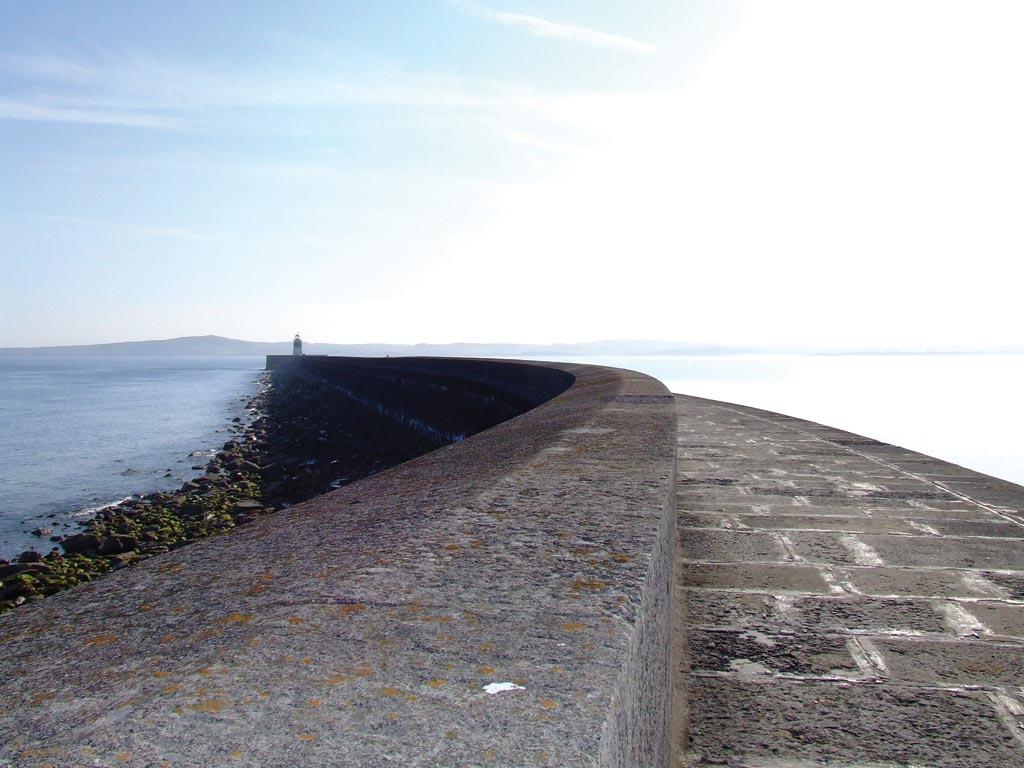
Some two miles west of the town is Mynydd Tŵr, Holy Mountain. The stone hut circles here date from the Stone Age, Neolithic era and in use through to the Middle Ages. The summit holds Caer-y-Twr, an Iron Age site with stonewalls four metres wide and three metres thick. Mynydd Tŵr at a height of 219 metres, with two sides dropping to the sea, is a bird lover’s dream. Puffins, guillemots, falcons, razorbills, choughs and other bird species gather in hundreds – even thousands! Collaring the mountain is the RSPB Reserve. Further on is the South Stack cliffs and lighthouse, the lighthouse of the Jack Jones legend. Built in 1809 on the tiny islet – Ynys Lawd – it’s reached by flights of stairs and a daunting bridge. In October 1853, amidst a horrific coastal storm that claimed over 200 ships, Jack Jones was crossing the bridge to aid the principal keeper. A rock dislodged in the storm, fell on his head. He managed to drag himself to the lighthouse door but couldn’t be heard knocking. Henry Bowen inside was neither expecting him nor could hear him above the howl and fury of the winds. Jack was found the next day but died two weeks later. Today, it’s said that his knocking can be heard now – along with tapping on the window, door being rattled and footsteps.
The Holyhead Breakwater at the port is the longest in Britain. At 2.7km it has been protecting the port, town and beaches around since 1873 and is a magnet for walkers and cyclists as well as fishing folks. The Breakwater Country Park is where the stone was quarried for The Breakwater. It’s officially an area of outstanding beauty. Tucked away inside the breakwater is the Maritime museum which was once the lifeboat house built in 1857.
Getting there:
By car: The A55
By train: Via Bangor.
By plane: Cardiff to Anglesey Airport.
By bus: 4X or X4 from Bangor.
By ferry.
Words: Gillian Thomas
Feature image: St Cybi’s Church, Holyhead by Jeff Buck


